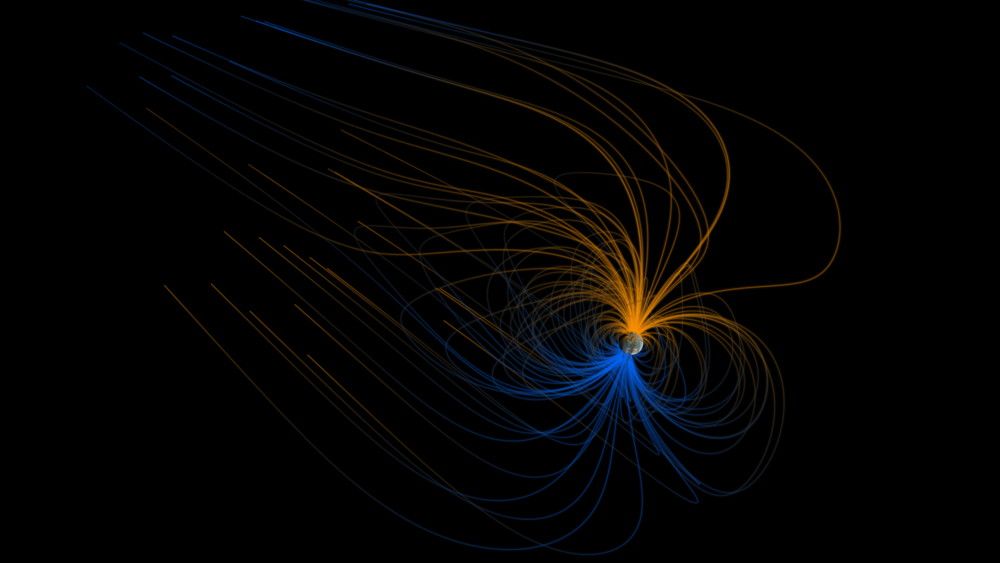
Scientists studying Earth’s magnetic field have discovered that its electric heartbeat flows in the opposite direction from what long-standing models predict.
Earth is surrounded by a vast magnetic bubble called the magnetosphere, which shields the planet from the solar wind, the stream of charged particles constantly blowing from the sun. When the solar wind collides with Earth’s magnetic field, it stirs up electric currents and magnetic forces that drive space weather, from record-breaking auroras to storms capable of disrupting satellites, power grids and communications.
For decades, scientists believed that the magnetosphere has a simple electrical layout, with the positive charge on the morning (“dawn”) side of Earth and negative charge on the evening (“dusk”) side, reflecting how electric fields normally push charged particles from positive to negative regions. But new satellite data and computer simulations show that the picture is more complex — and partly upside down.
A team led by Yusuke Ebihara, who is a professor in the Research Institute for Sustainable Humanosphere at Kyoto University in Japan, found that the morning side of the magnetosphere actually carries a negative charge, while the evening side is positive.
The findings, described in a paper published earlier this year in the Journal of Geophysical Research: Space Physics, refine scientists’ understanding of how electric and magnetic forces flow through Earth’s space environment — insights that could improve space weather forecasting and the protection of technology in orbit and on the ground.
To arrive at their conclusions, Ebihara and his team analyzed data from NASA’s Magnetospheric Multiscale, or MMS, mission, which investigates how solar energy explosively transfers into near-Earth space by studying how the sun’s and Earth’s magnetic fields connect and disconnect. This process, called magnetic reconnection, explosively releases solar energy into near-Earth space, fueling storms and auroras.
The researchers also ran detailed computer simulations to recreate conditions around Earth under a steady stream of solar wind. The results confirmed that the poles behave as expected, but the regions near the equator are reversed, with opposite charge patterns spanning a wide area.
“In conventional theory, the charge polarity in the equatorial plane and above the polar regions should be the same,” Ebihara said in a statement. “Why, then, do we see opposite polarities between these regions?”
This reversal, Ebihara added, can be explained by the movement of charged particles, rather than static electric buildup. When energy from the sun hits Earth’s magnetic field, it causes plasma to swirl around the planet. On the dusk side of Earth, that plasma flows clockwise and moves toward the poles. Meanwhile, Earth’s magnetic field lines run from the Southern Hemisphere to the Northern Hemisphere — upward near the equator and downward near the poles, according to the statement.
Because the plasma’s motion and the magnetic field lines are oriented in opposite directions, their interaction changes the way electric charge builds up in different parts of the magnetosphere, creating the “reversal” scientists observed.
“The electric force and charge distribution are both results, not causes, of plasma motion,” Ebihara said in the same statement.
By showing that different parts of the magnetosphere can behave in opposite ways, the study adds nuance to models of how energy from the sun enters Earth’s upper atmosphere.
These findings could also shed light on the magnetic environments of other worlds, such as Jupiter and Saturn, whose giant magnetospheres interact with the solar wind in similar ways, scientists say.
